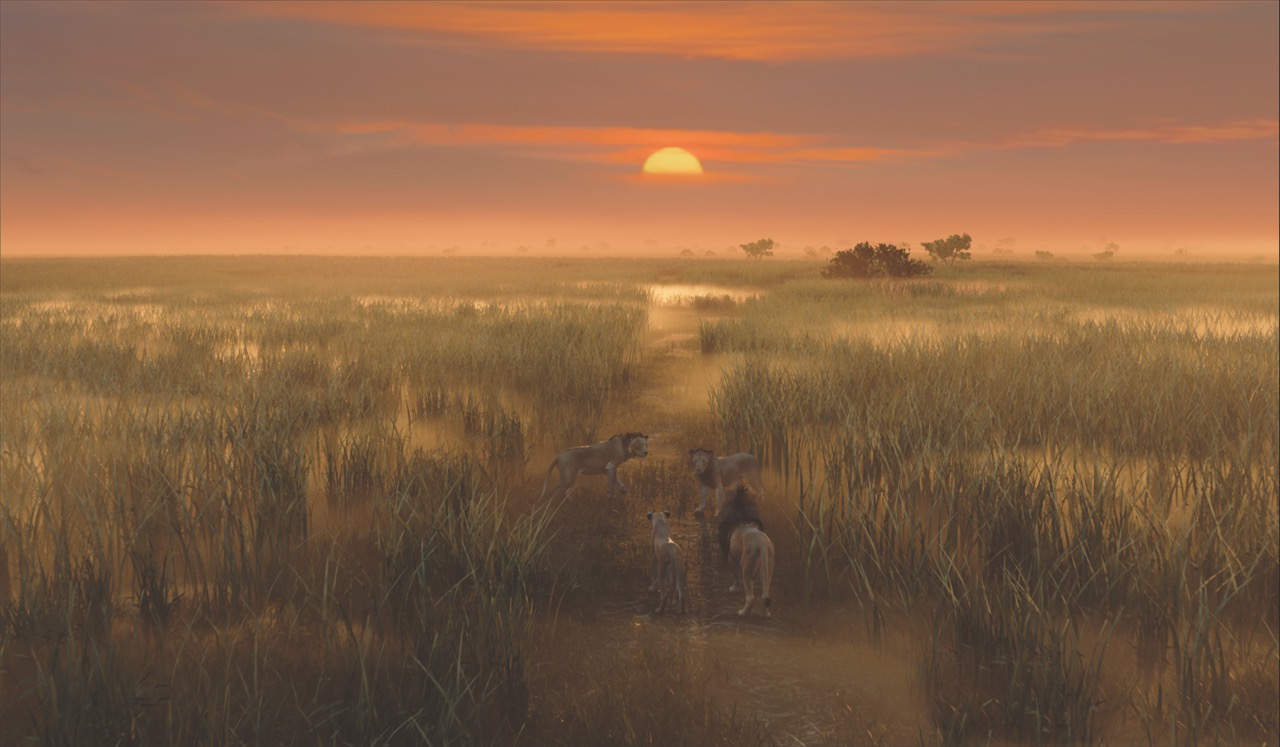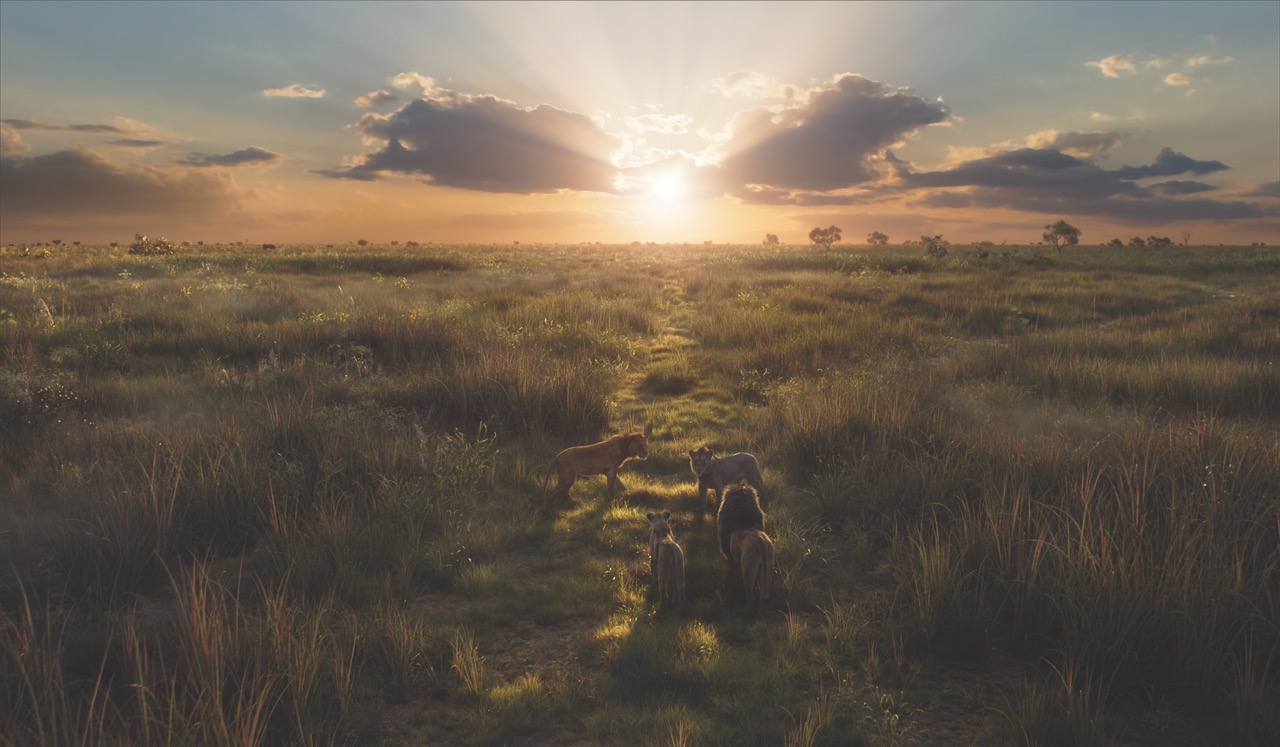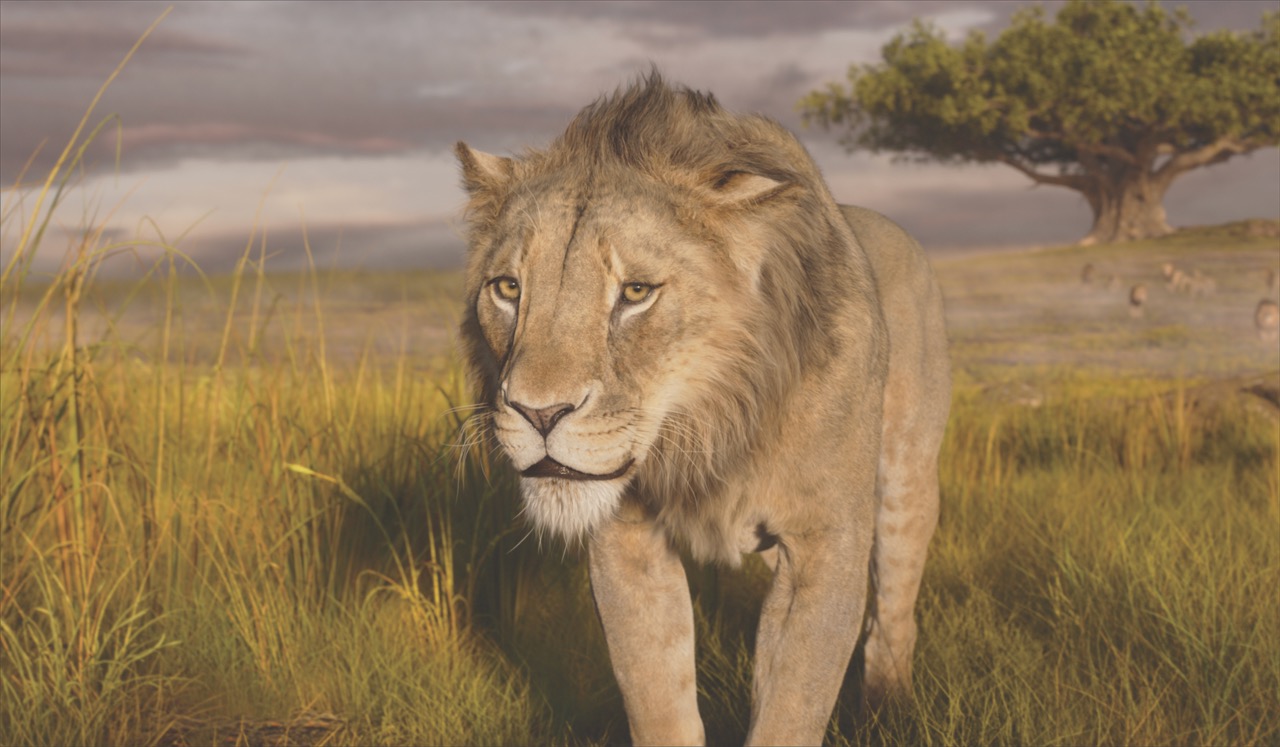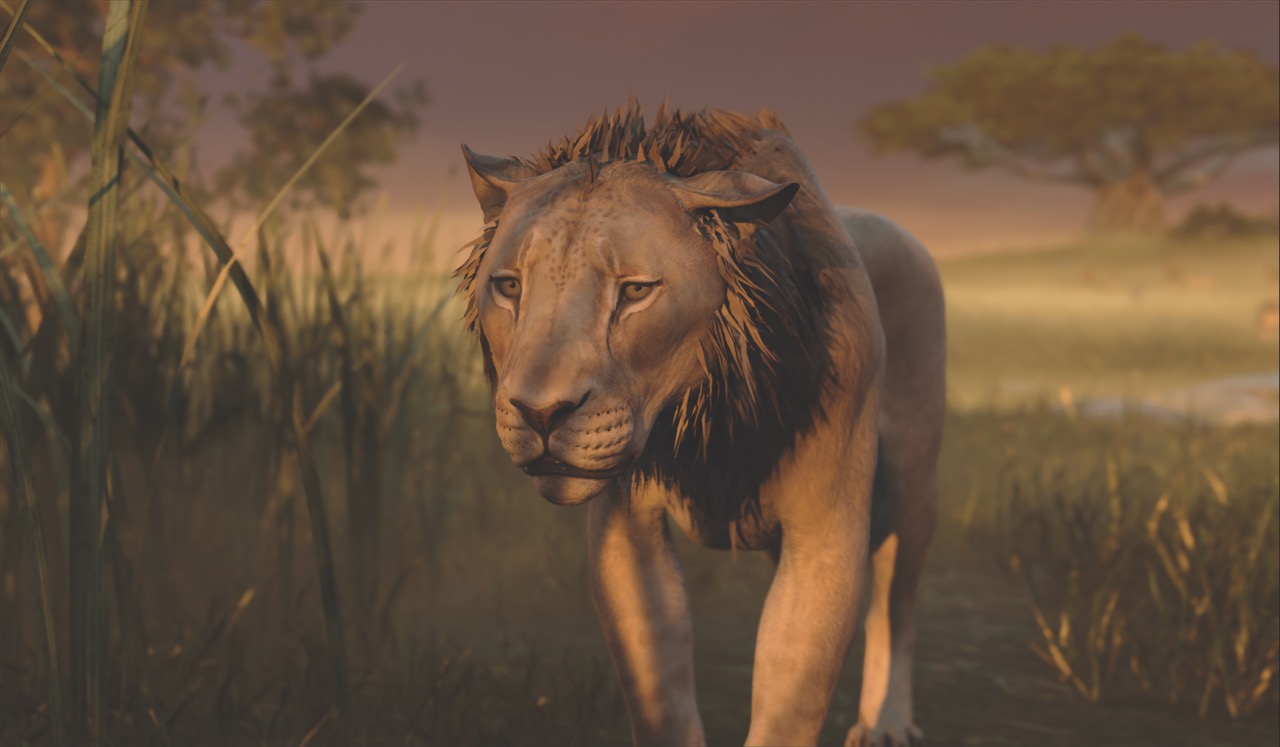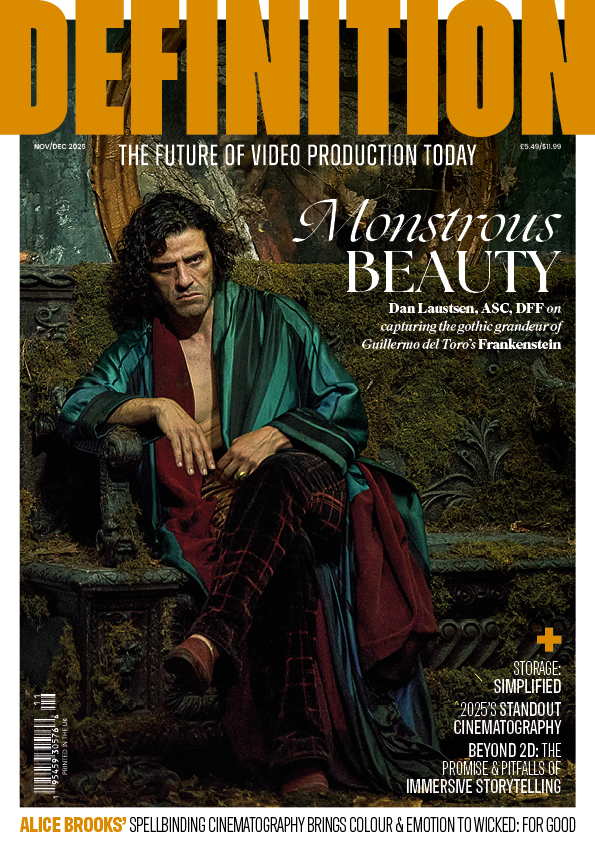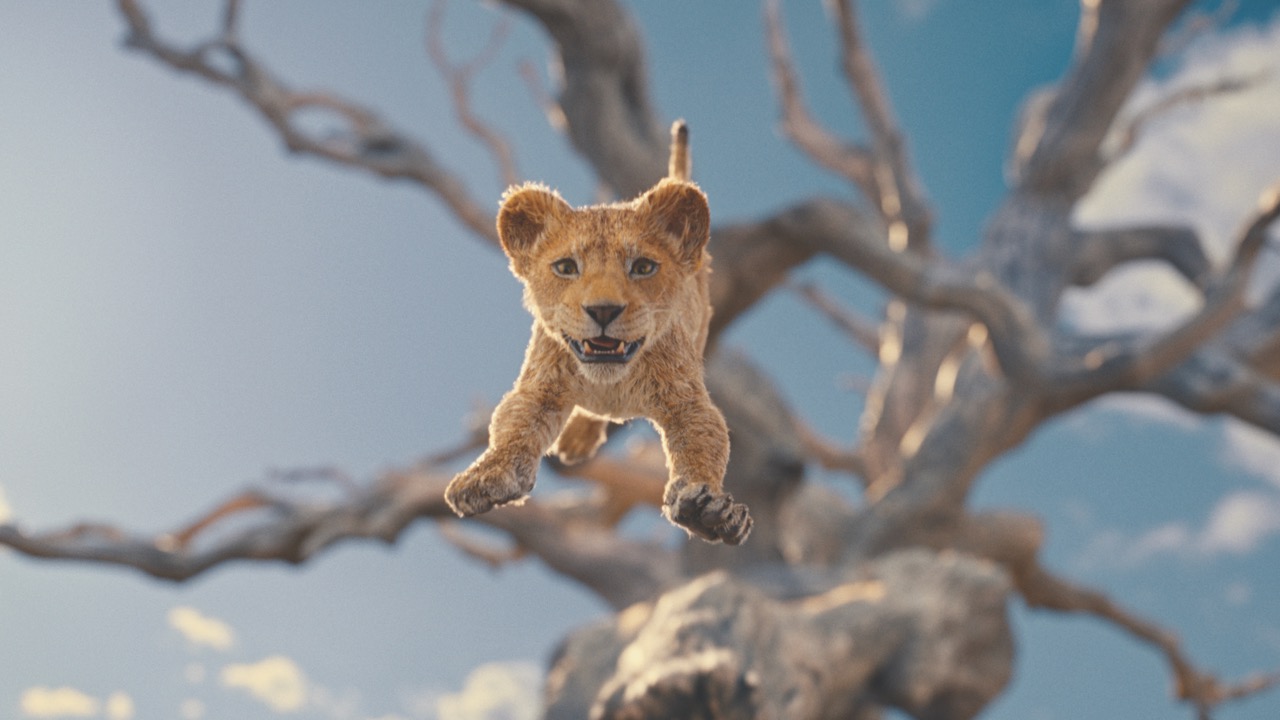
VFX breakdown – Mufasa
Posted on Feb 24, 2025 by Admin
Paws & effect
Production VFX supervisor Adam Valdez on crafting the Pride Lands for Mufasa
Words Oliver Webb | Images Disney
Mufasa: The Lion King serves as a prequel to the events of The Lion King and is the origin story of the titular character, father of Simba. After a chance encounter with another lion named Taka, the heir to a royal bloodline, the two must journey across the plains in search of a new destiny. Adam Valdez served as production visual effects supervisor on the film, with a team of over 1700 artists and production crew at MPC delivering the visual effects.
Valdez initially met with director Barry Jenkins for an orientation, as it was Jenkins’ first animated feature. “We had phone calls and meetings, and then he asked if I could do the movie,” Valdez recalls. “I said yes because he’s a great filmmaker and a wonderful person. It felt like a great experience to work with him, especially since I’d done similar movies before. Barry had lots of questions about how to elicit emotions from lions. His focus is on telling emotional, intimate stories, and he really views the world from a character’s point of view.”
Making Mufasa was a four-year process, with Covid-19 significantly impacting production. “I was initially working from my house in London, while Barry was in LA,” Valdez explains. “Our production designer Mark Friedberg was in New York City. Fast-forward many months, and we were all in LA, finally shooting and prepping. The first year was this strange hybrid where we initially couldn’t be together but gradually moved toward the day we could all work under one roof.”
Creating the vast landscapes for this film was a major challenge for Valdez and his team, with MPC sculpting environments down to every blade of grass. “There is so much potential material to draw from in a continent as vast as Africa,” shares Valdez. “We relied on local knowledge, and scouts captured photos and gathered information for us.
“That’s how we approach complex worldbuilding movies – we are not inventing entirely fantasy places but aiming to represent some truth,” he continues. “We were lucky to visit Africa for Mufasa; you come back with a sense of obligation to represent it – a place so powerful in many ways. You’re striving to make a world that functions for a story and creates an experience for an audience, while also honouring the truth that gives it depth.”
MPC has extensive expertise when it comes to 3D worldbuilding. “You’re constructing complex worlds using libraries of plants, rocks and landscape elements to replicate the variety found in nature,” says Valdez. “There’s a detailing phase where the team applies a simulation approach – imagining how water flows through an environment, eroding and leaving traces of its history.”
He elaborates: “They combine texture maps to achieve a sense of naturalism and complexity. While you’re doing all that, you still need to art direct, making it a whole series of steps and tools that combine to solve the classic filmmaking issue of capturing environments in all their fullness.”
One of the film’s most visually striking scenes introduces a snowy mountain terrain the characters must journey through. “There was something fun and novel about seeing lions in snow,” admits Valdez. “I don’t know if lions naturally go to that high altitude, but there are pretty significant mountain ranges not many people might know about.
“For the snowy mountains, it was about being as far away as possible from the end scene, which is a beautiful, lush green world,” he adds. “I was concerned about whether our snow would actually resemble snow; it’s not an easy thing to convey in the computer. The main focus was on the crystalline aspect. I think the team did a fantastic job of bringing the material definitions of ice, including ice with bubbles and veins of frost. There’s so much layering in those environments. Additionally, there’s a beautiful love song beneath the frozen falls, where sheeted water is frozen into icicles, creating beautiful moments of distortion and reflection. It was a highly complex scene.”
Just shy of 1500 visual effects shots were created for the film in total, with one of the major production challenges being the simulation of the interaction between animal fur and water – a noteworthy innovation. Another tricky process was capturing the nuanced facial language of the animals.
Virtual production stages were also used to capture performances of some of the characters, with motion capture used for multiple performers playing key characters. Jenkins was then able to watch a live feed on screen through Unreal Engine, which allowed him to view real-time performances.
Motion capture was used in the film for two purposes, as Valdez explains: “We used it to track the camera movement, but we also utilised it to input human actors as performers for the lions. There was a technique that was dubbed Quad Cap because of the quadruped nature of the lions. Here, the front half of the person controlled the front legs of the lions, and wherever I was looking, the lion would also be looking.
“You are warping the human body under this lion shape to allow a performer to drive a lion,” continues Valdez. “The back legs are generated with a puppeteered rig, a mechanism that ensures the lion follows wherever you’re going. We didn’t use this for every scene in the movie – if you have a lion swimming through water, it’s extremely difficult to achieve that on a normal sound stage.”
Jenkins found this method useful for directing the action, rather than watching animation slowly build up through keyframing, where animators create the action. “Everything you see in the final movie is actually done by animators,” reveals Valdez, highlighting the skill behind the animated sequences.
“The motion capture was a way of laying out the action,” he adds. “It’s not really a motion capture film in the sense that we didn’t capture the final performances. Instead, they are an amalgamation of voice acting, motion capture and what the animators bring at the end – from different references of natural motion to their own interpretation of the moment.”
For Valdez, one of the most enjoyable elements of working on the film was the collaboration with Jenkins, as well as the filmmakers who were deeply focused on perfecting the emotion, acting and artistry of the project.
“They had to learn a lot and bend their normal ways of working to meet the demands of this process. I think it’s often underappreciated how much Disney and its teams care about making great work. There’s not a single person on the movie who isn’t there to do something excellent and who doesn’t love movies or want to make great pieces of work,” he concludes.
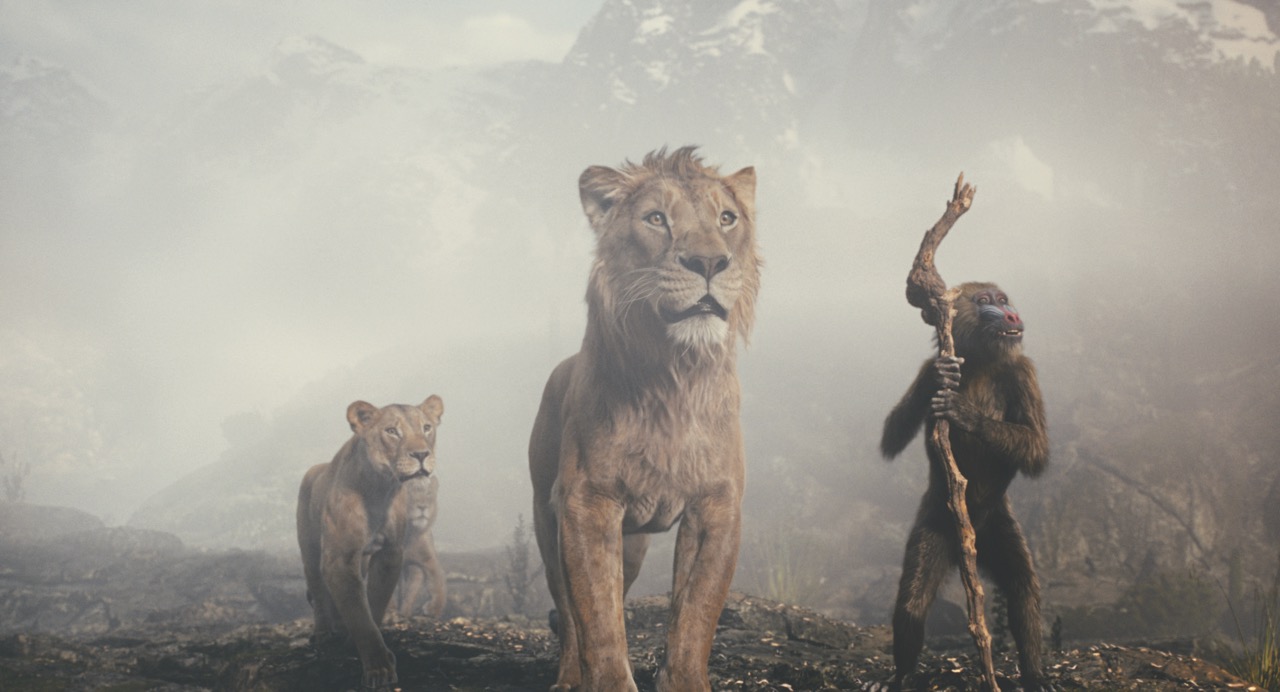
This story appears in the February 2025 issue of Definition


